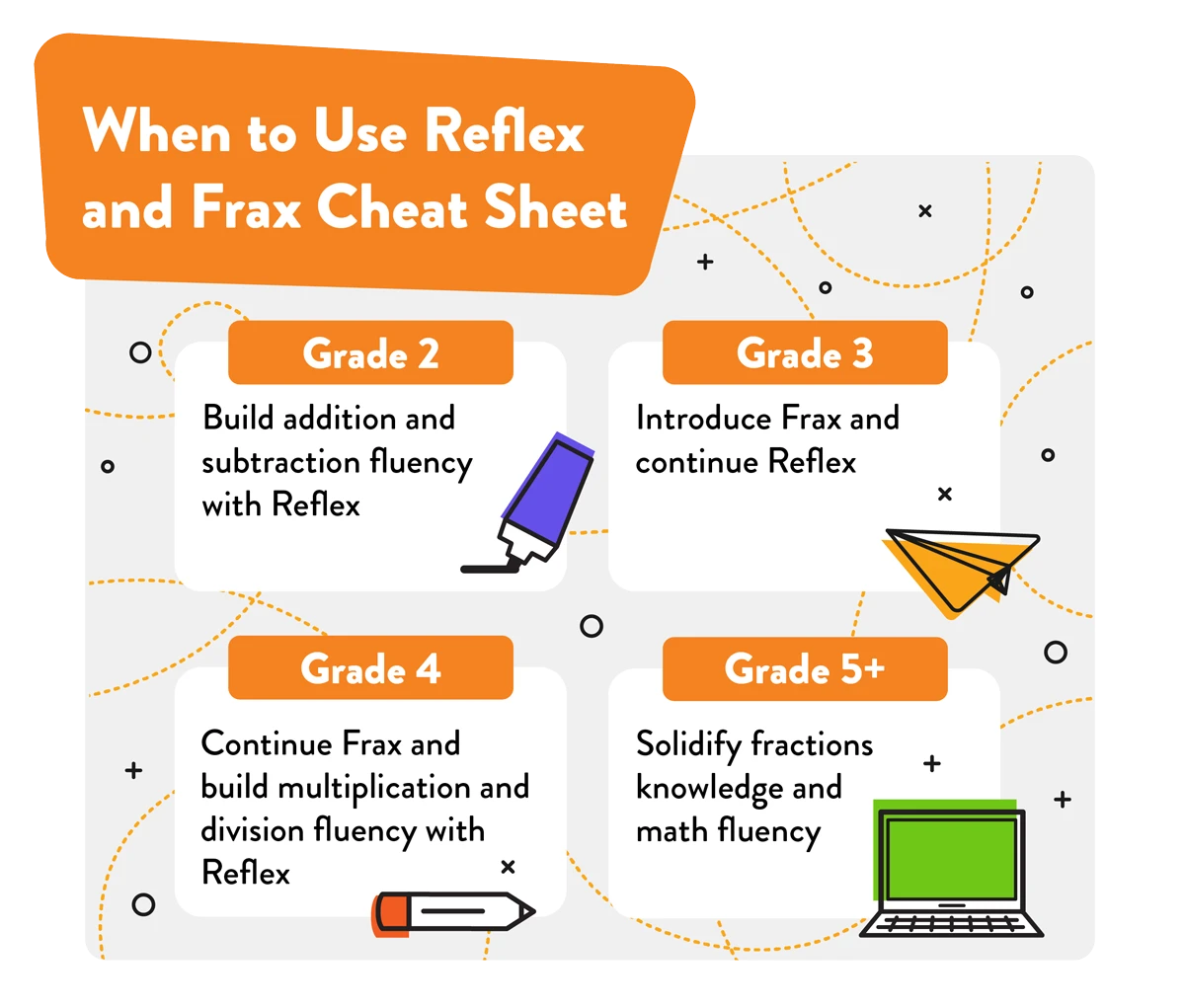Math Fact Fluency & Fractions: Key Skills for Math Success

The groundwork for foundational math develops long before a child graduates elementary school. Wait, elementary school? Yep. The advanced skills and concepts children encounter in middle school, high school, and beyond all have roots connected to the critical math knowledge developed earlier in school.
However, two of the most important math concepts are often the areas where elementary students tend to struggle the most: math facts and fractions.
Keep reading to discover how fractions and math fact fluency impact students’ future understanding of math.
Why are math facts and fractions important?
Extensive research has demonstrated the critical role of math fact fluency in elementary school math and beyond. When students develop fluency with addition, subtraction, multiplication, and division facts, they free up working memory space for advanced problem-solving. Math fact retrieval speed is also a significant predictor of performance on standardized tests.
What about fractions? Research reveals the hidden role of fractions on students’ long-term math success, particularly in algebra. Fractions knowledge at the end of fifth grade was also identified as a strong and unique predictor of high school math success (even after controlling for other variables that typically impact math achievement, including knowledge of whole numbers, IQ, working memory, reading comprehension, and family income and educational levels).
How do math facts and fractions work together?
Once students become fluent with addition, subtraction, multiplication, and division facts, they unlock the ability to tackle more advanced math, including fractions. With less time devoted to retrieving math facts or counting on their fingers, students can dedicate their energy to new skills, such as word problems, multi-step problems, or learning fractions.
When it comes to fractions, students must first develop a conceptual understanding of fraction magnitude (size) before they can complete advanced work. Research shows teaching fractions is most effective when students use visual representations like length models and number lines to foster an understanding of fraction magnitude. Once students have firm grasp on magnitude, they can apply that knowledge to advanced work, like adding and subtracting fractions or comparing fractions.
Supporting success with math facts and fractions
Fact fluency prepares students for more advanced fluency work. For example, knowing addition and subtraction facts assists a child later down the road when they begin to solve long division problems. Math fact fluency also impacts student success by reducing math anxiety and improving overall math motivation and confidence. When students master their math facts early on, it can lead to greater academic achievement and more positive attitudes about math and related subjects.
The National Math Advisory Panel looked at factors associated with algebraic readiness and concluded that “the teaching of fractions must be acknowledged as critically important and improved before an increase in student achievement in algebra can be expected” (2008).
Reflex (for math facts) and Frax (for fractions understanding) are adaptive and research-based elementary math programs that enhance classroom curriculum. Elementary teachers using Reflex and Frax optimize their instruction to help students develop math fact fluency and fractions knowledge during grades 2-5.

Hear from our team on why math fact fluency & fractions matter
Math facts and fractions are critical skills. Hear from Jesse Mercer, Senior Product Designer at ExploreLearning, as he explains how math fact fluency and fractions impact student success and outcomes.
Discover the efficacy research
With a sea of options, educators must evaluate the impact of edtech products to determine what solutions are worth the investment. Administrators and teachers should look for math programs with demonstrated evidence-based research to fully examine how a solution impacts student learning and overall achievement.
ExploreLearning is committed to research. Multiple efficacy studies demonstrate the positive impact of using Reflex and Frax for evidence-based math practice. Across all achievement levels, students who used Reflex and Frax made significantly larger academic gains in math compared to non-users, with the most academically at-risk experiencing even greater growth. Frax and Reflex users who scored two or more grade levels below in the fall had 56% greater scale score gains and were nearly three times as likely to reach their stretch growth goals.
A two-year study found that 2nd graders who scored two or more grade levels below their peers in math improved by an average of 11 percentile points when they used Reflex, compared to 5 percentile points in non-users. When those same Reflex users advanced to 3rd grade and used Frax, students were 2.5x more likely to reach on-grade level math proficiency by the end of 3rd grade compared to non-users.
More Reflex Research More Frax Research
Experience effective fact fluency and fractions solutions
Building foundational math skills during the elementary years is critical, but it doesn’t have to be complex! Try game-based and research-proven solutions with your students today.
